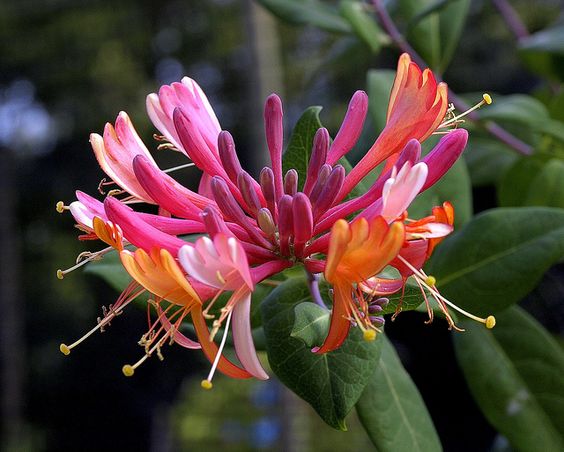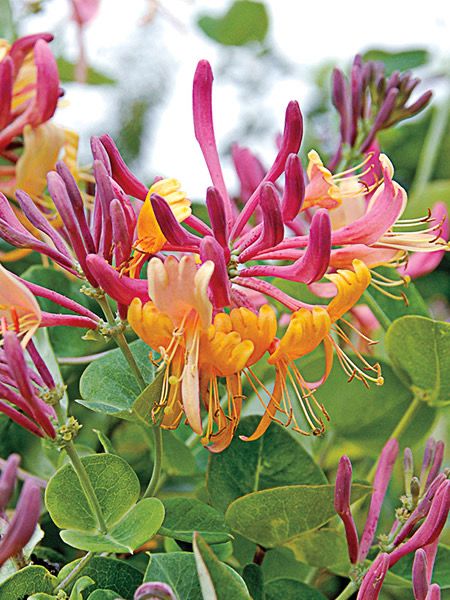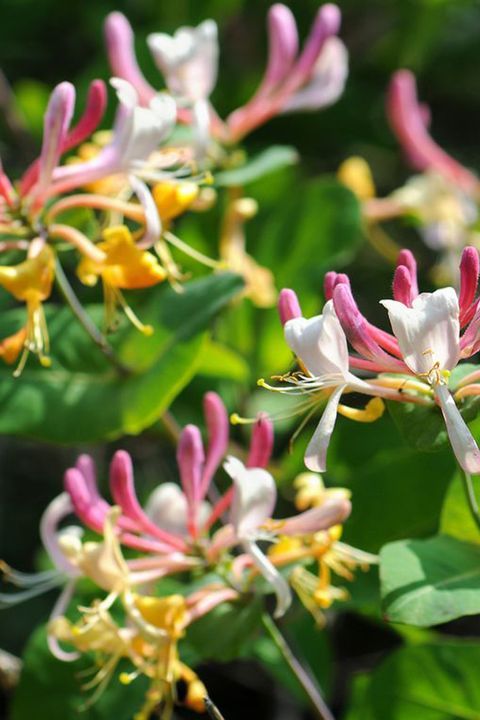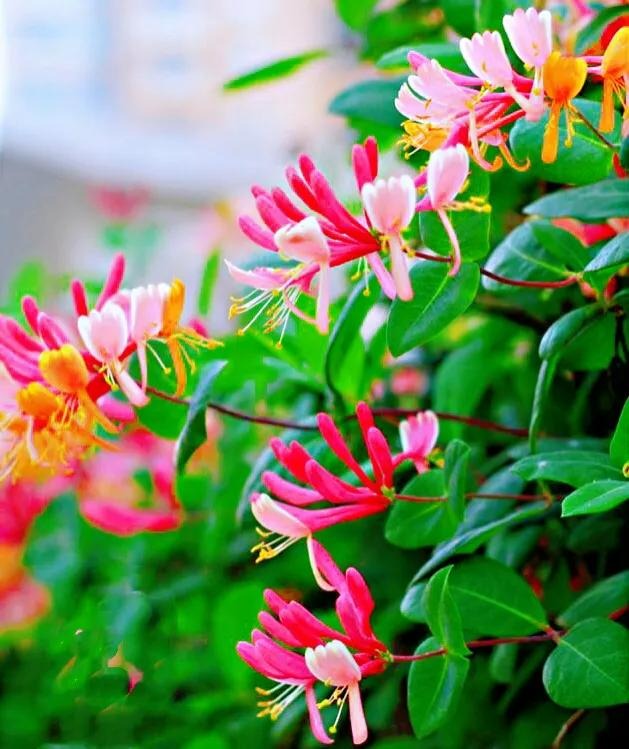The goldflame honeysuckle plant is a beautiful perennial vine that can be used to decorate trellises, arbors, and fences. Its unique bicolored tubular flowers and glossy oval leaves make it a great option for adding visual appeal to any outdoor space. To ensure the plant thrives, it is important to provide it with at least six hours of direct sunlight every day. This hybrid plant, which is a cross between Lonicera americana and Lonicera sempervirens, requires sunlight to flourish. It can also tolerate partial shade, but it does best in soil that is slightly acidic to neutral in pH.

The delightful vine of the goldflame honeysuckle has the ability to rapidly reach a height of 15 feet if left untrimmed. In regions with warmer climates, this plant retains its leaves throughout the year, while in colder areas, it sheds its leaves during winter. Nevertheless, with proper pruning, it can be transformed into a full-bodied shrub that grows to a maximum height of six feet. This makes it an ideal option to consider when looking to create a private and secluded area.

The goldflame honeysuckle is a popular choice for attracting hummingbirds and butterflies due to its tubular flowers that secrete a delicious nectar. These flowers boast vibrant pink and yellow or coral petals that create a stunning display reminiscent of a fireworks show. While the occasional fruit it produces is a delightful treat for birds, it’s important to note that it’s toxic to humans. One of the many advantages of this plant is that its attractive blossoms are not appetizing to deer, making it an excellent addition to any garden.

The goldflame honeysuckle is a stunning and non-invasive plant that can be a beautiful addition to any garden due to its unique qualities. To ensure its optimal growth, it is crucial to provide the plant with ample sunlight and well-drained soil. It is also recommended to establish a regular watering schedule during its first year to aid in root development, but be cautious not to let the soil dry out completely. Additionally, to maintain a manageable size and shape, it is advisable to trim the plant annually.

To ensure the best flowering results, it is advisable to plant the Goldflame honeysuckle in an area where it can receive ample sunlight. This plant has the ability to thrive if given the opportunity to climb on objects such as light poles or mailboxes. One interesting aspect of this plant is its adaptability to dappled shade, making it an attractive choice for arbors. Creating an ideal environment for the Goldflame honeysuckle involves planting it in acidic, well-drained soil. During the initial stages of growth, when its roots are spreading, it is important to provide the young plant with sufficient water. However, excess water can be detrimental to its survival. In terms of temperature, this twining vine flourishes in conditions ranging between 45 and 60 degrees Fahrenheit, provided there is moderate humidity. It is worth noting that when the outdoor temperature exceeds 95 degrees Fahrenheit, the growth rate of this plant often slows down. With regard to cold tolerance, the Goldflame honeysuckle can withstand temperatures in the twenties. Therefore, it may be pruned during the winter months to control its vigorous spring growth. For optimal development, it is recommended to apply a general-purpose fertilizer with a 3-1-2 NPK ratio each spring. Lastly, to ensure the vine’s overall health and growth, minimal pruning within the first two years after planting is essential.

Propagating goldflame honeysuckle is a simple and rewarding process that requires either layering or clipping its leaves. One method is to layer in early spring by burying the middle section of a vine that is still connected to the main plant, making sure to water it regularly until roots start to form. Another option is to take 6 to 8-inch-long leaf cuttings, dip them in rooting hormone, and plant them in a small pot filled with well-drained soil. For those looking to produce seeds, planting mature berries that have undergone cold stratification is a viable choice. This tough and resilient plant can withstand temperatures as low as 20 degrees Fahrenheit, but it does require regular repotting to ensure its continued health and growth. The goldflame honeysuckle impresses with its delightful bicolored blossoms, which emit a lovely scent. These blossoms bloom consistently from June through August, extending into early September in warmer regions. To ensure optimal flowering, it is essential to plant the honeysuckle in a sunny location, fertilize it regularly, and prune it to encourage additional flowers. When caring for the plant, it is important to resist the temptation to immediately remove the flowers once they have bloomed. By allowing them to remain, they have the potential to transform into berries, which in turn spread the honeysuckle’s seeds, ensuring its continued presence and growth in the surrounding area.





Credit: Pinterest Source: Garden Enthusiast Paraphrased: Credit where it’s due: The image is sourced from Pinterest. The information you’re about to read is catered for those who are passionate about gardening.


